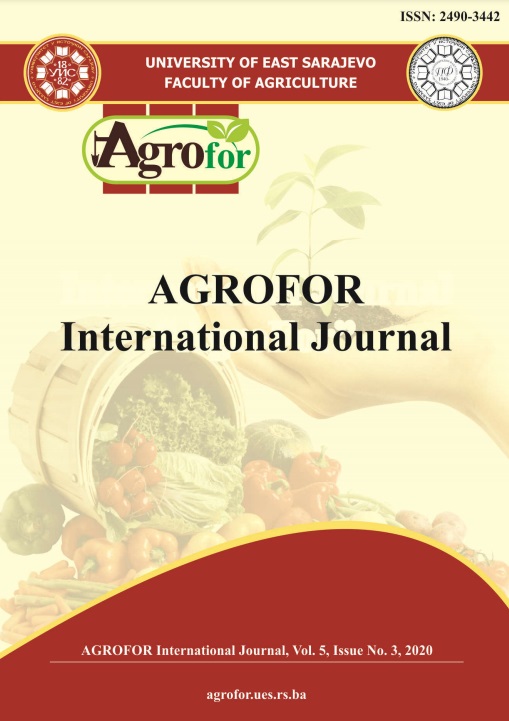EFFECTS OF GREEN FERTILIZERS ON THE QUALITY STATUS AND PRODUCTION CAPACITY OF THE CAMBIC CHERNOZEM FROM MOLDOVA
DOI:
https://doi.org/10.7251/AGRENG2003028LAbstract
Chernozems Cambic from Central Moldova are subject to different forms of
anthropogenic degradation. One of these is dehumification (loss of humus) and
compaction of arable soil layers. In the recent situation regarding soil degradation
of Moldova, the use of green fertilizers (leguminous) in crop rotation is the only
possibility to remediate and maintain the quality status of the arable soils for the
long term. Research was carried out over two farming years (2015-2016). In order
to assess the quality status and production capacity of degraded cambic
chernozems, two green mass harvest of vetch were incorporated into the soil as
organic fertilizer on the field used for one year as an ”busy field” - sown with vetch
two time (autumn 2014 and spring 2015), in the 5-field crop rotation (vetch-wheatrapeseed-
barley-sunflower). The research results showed that the incorporation into
the soil by disking two harvests of green mass and vegetal debris of vetch (about
12,4 t ha-1) as organic fertilizers led to the increase of humus content by 0.20%,
compared to the control variant; to accumulation in the soil of 310 kg of nitrogen,
of which 180 kg fixed from the atmosphere; synthesis of about 3 t ha-1 of humus or
1.7 t ha-1 of carbon; sequestration of about 6.3 t ha-1 of CO2; a weakly positive
balance of organic matter and nitrogen in the soil over 3-4 years was insured. On
the plot where one harvest of green mass of vetch was incorporated into the soil as
green fertilizers, the increase in the wheat harvest increased up 2.4 t ha-1, and on
the plot where two harvests of green mass of vetch were introduced into the soil,
the harvest increase up 3.2 t ha-1, the total harvest was 7.0 t ha-1.

